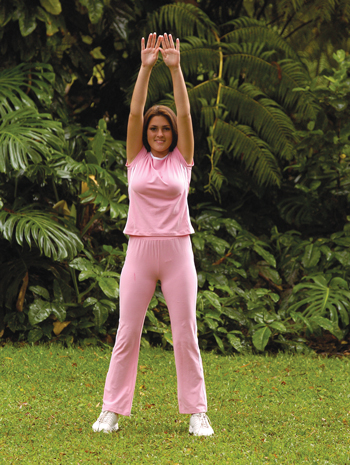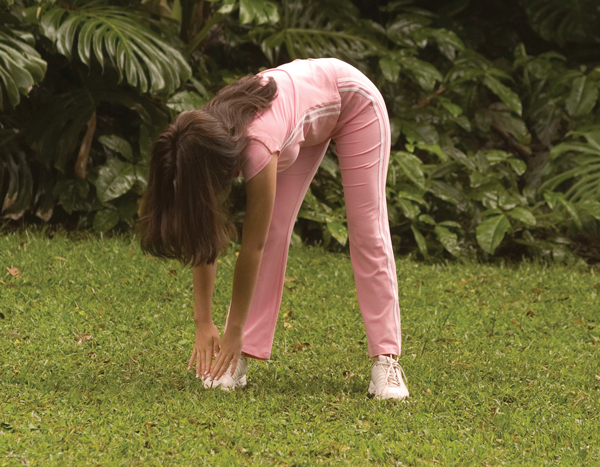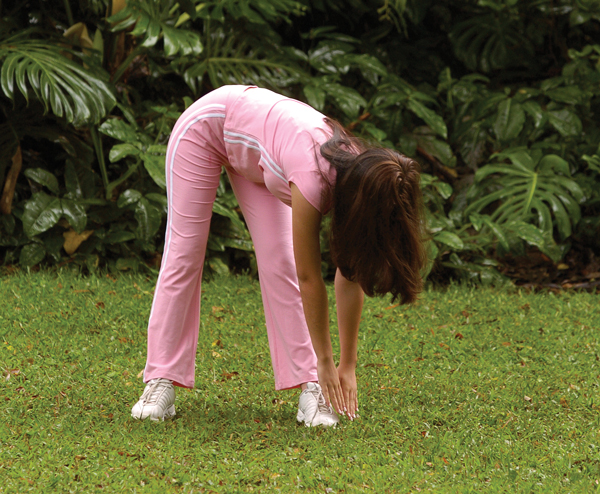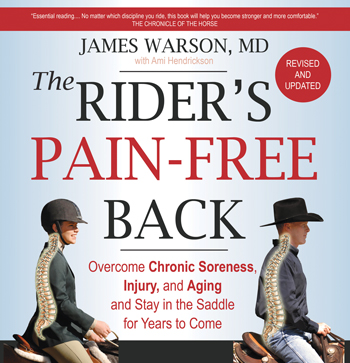 This article about back pain in horseback riders is adapted with permission from The Rider’s Pain-Free Back by Jim Warson, M.D.,with Ami Hendrickson, published by Trafalgar Square Books. www.horseandriderbooks.com
This article about back pain in horseback riders is adapted with permission from The Rider’s Pain-Free Back by Jim Warson, M.D.,with Ami Hendrickson, published by Trafalgar Square Books. www.horseandriderbooks.com
Back pain affects four out of five people at some time during their lives. It is the leading cause of disability for people between the ages of 19 to 45. Back pain is second only to the common cold for causing adults under 45 to miss work. Furthermore, as we age, low back pain becomes more and more common, affecting half of the population older than 60 at any given time.
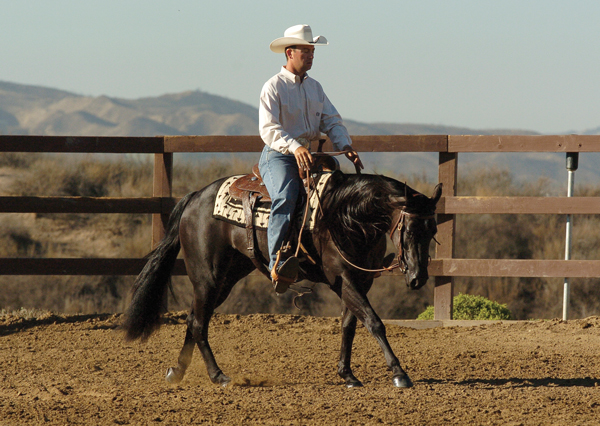
Back Pain and Horseback Riders
Though no back injury is desirable, it can be even more problematic for those who live with horses and love them. Back pain can literally rob you of the enjoyment you get from riding and working with your horses.
The rider with a healthy back will exhibit both flexibility and strength. The informed rider will also do a little bit each day to ensure continued back health.
Back strength and flexibility are not absolutes. It’s not a matter of “you either have it or you don’t.” Both flexibility and strength are measurable on a continuum. Time and circumstances can influence one or both for the better or the worse.
If you are a horseback rider experiencing back pain, you certainly should have a competent physician who is experienced at diagnosing and treating back disorders take a look at you before you begin any exercise program. Ideally, the physician you choose will be relatively experienced with horses, but this tends to unreasonably narrow the talent pool. Unfortunately, very few physicians combine a solid knowledge of the spine with an understanding of the medical aspects of riding. Don’t be surprised if you hear, “If your back hurts, don’t ride,” from well-meaning members of the medical profession. This is an attitude that I hope to change by emphasizing your responsibility and initiative for dealing with and avoiding back pain.
The Importance of Flexibility
Building flexibility and strength in your back and in related body parts is the key. In this article, I’m going to focus on flexibility.
Why do we want flexibility in our backs? The answer is simple: strength without flexibility is force produced in a limited manner, in only one direction. Flexibility enables a rider to exert a reasonable amount of force in all directions.
This is terribly important in riding, because maintaining your balance and changing your mechanics during the different gaits requires not only strength, but also coordination of that strength through a relatively broad range of motion. In order for your muscles to work efficiently and produce the strength and motion necessary for good riding, you must have some flexibility.
Age is not necessarily a contraindication of flexibility. Some elderly patients exhibit excellent range of motion.
Muscles that are flexible, and have been properly stretched, are the ones that can be trained to be the strongest. Muscles that are continuously tight, through the ligament tightening and muscle tightening, are inefficient and simply don’t provide the optimal strength and endurance possible.
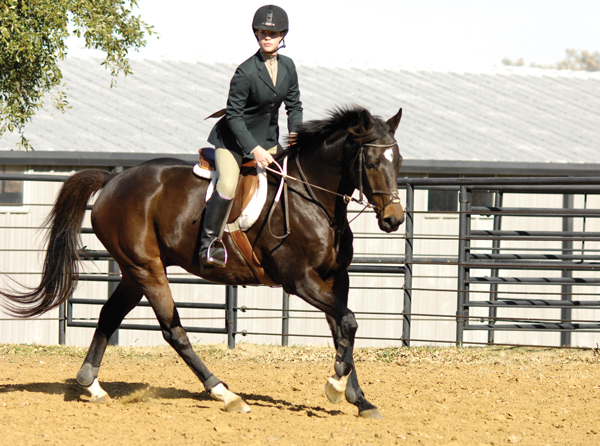
Stretching Correctly
Stretching the muscles in a methodical, controlled, targeted manner is the best way to increase your range of motion. For optimum flexibility, it’s just as important to stretch your muscles after doing some sort of physical activity as it is to stretch beforehand.
The back is a somewhat difficult area to stretch at first. Learning to stretch your back effectively, safely, and for best results takes practice. Nevertheless, once you are aware of the muscles and movements involved, you can stretch your back muscles just as well as any other group of muscles in the body.
Back stretching involves stretching the hip and buttock (glute) muscles as well as the back. You can’t stretch the back very effectively without involving the hips and glutes, as well.
Back stretching exercises also stretch the muscles and ligaments in the legs at the same time. In terms of the benefit obtained, and from a muscular point of view, it’s best to stretch the back, hips and legs in concert, because you ride with them in concert.
The total time taken to do the kind of stretches I recommend is only four or five minutes, but it will pay off. It could be the best couple of minutes you’re going to spend on yourself all day, next to the actual riding time itself.
JAMES WARSON, M.D. (ret.), founded Front Range Brain and Spine Surgery practice in Fort Collins, Colo., in 1978. He devoted the majority of his practice to spine surgery; diseases of equestrians caused or aggravated by riding were Dr. Warson’s field of expertise. In 1984, Dr. Warson established J & J Farms, where he bred, trained, exhibited, and sold multiple Grand National and World Champion Morgan horses. Today Dr. Warson is based in Fairfax, Va., where he is the Mid-Atlantic Medical Director for the Medeval Corporation and serves as Medical Director for Rider Health and Safety with the Western Dressage Association of America.
This article about back pain in horseback riders originally appeared in the November 2019 issue of Horse Illustrated magazine. Click here to subscribe!

